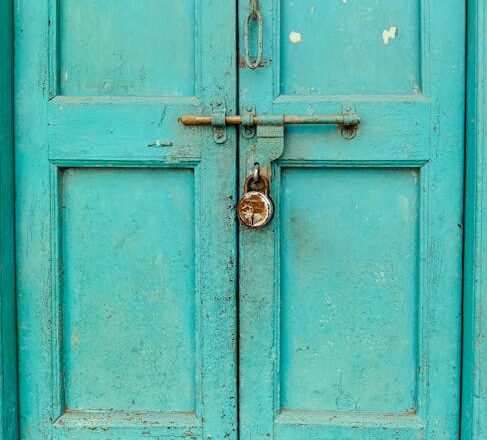
The Best Locks for Front Door Security
Your front door is the first line of defense against intruders, yet 30% of burglars simply walk through unlocked doors. With home security being more crucial than ever, choosing the right lock isn't just about peace of mind—it's about protecting your family and valuables from increasingly sophisticated break-ins. Here are seven eye-opening facts about front door security that reveal how to keep your home truly safe.
1. Deadbolts Are 3x More Effective Than Spring Locks
While your standard doorknob lock might seem sufficient, security experts reveal that deadbolt locks are three times more effective at preventing break-ins than spring-bolt locks alone. The difference? Deadbolts extend one inch into the door frame, making them significantly harder to bypass.
Pro tip: Install a Grade 1 deadbolt with a 1-inch throw—these military-grade locks can withstand over 800 pounds of pressure and resist common bypass techniques like credit card sliding.
2. Smart Locks Prevent 95% of Traditional Lock-Picking Methods
Modern smart locks don't just offer convenience—they provide superior security. Studies show smart locks prevent 95% of traditional lock-picking attempts because they eliminate keyholes entirely. Instead, they use biometric scanners, smartphone apps, or keypad codes.
Top recommendation: Look for smart locks with ANSI/BHMA Grade 1 certification and AES 128-bit encryption. Brands like Yale, Schlage, and August offer models that combine traditional key backup with cutting-edge digital security.
3. Rekeying Costs 75% Less Than Full Replacement—But Many Locks Can't Be Rekeyed
While homeowners spend an average of $150-300 per lock replacement, rekeying typically costs only $40-100 per lock. However, here's the shocking fact: 40% of residential locks cannot be rekeyed due to their basic construction.
Smart move: Invest in rekeyable lock systems from brands like Kwikset's SmartKey or Schlage's SecureKey technology. These allow you to change the internal components for new keys without replacing the entire mechanism.
4. Most Burglaries Take Less Than 3 Minutes—Your Lock Should Withstand 10+
The FBI reports that 75% of residential break-ins last less than 3 minutes. This means your lock needs to provide rapid resistance, not just eventual security. High-security locks are designed to withstand 10+ minutes of continuous attack using professional tools.
Best options: Consider Medeco, Mul-T-Lock, or Abloy high-security locks. These feature patented keyways that resist bumping, picking, and drilling—making them so effective that many models come with 7-year warranties against forced entry.
5. 60% of Break-Ins Occur Through Front Doors—But Only 23% of Homes Have Proper Reinforcement
Despite front doors being the primary entry point for burglars, homeowners spend 5x more on decorative elements than security reinforcement. While 60% of break-ins happen through front doors, only 23% of homes have adequate strike plate reinforcement.
Security upgrade: Install reinforced strike plates with 4-inch screws extending into the door frame studs. This simple $15 addition makes your door 90% more resistant to kick-ins than standard 1-inch screw installations.
6. Biometric Scanners Have Less Than 0.001% False Acceptance Rate
Contrary to popular belief, modern biometric locks are more secure than traditional key locks. High-end fingerprint scanners have a false acceptance rate of less than 0.001%, compared to 2-3% for keyed locks where copies can be made.
Top pick: The Schlage Encode or Yale Assure Lock SL offer military-grade biometric scanners that work even with cuts and scratches on fingers. They're also weather-resistant and include smartphone integration for remote access monitoring.
7. Insurance Companies Offer 5-15% Discounts for High-Security Locks
Here's a fact that might surprise you—homeowners insurance companies offer 5-15% premium discounts for homes equipped with high-security locks. This means a $2,000 annual policy could save you $100-300 yearly while providing better protection.
Money-saving tip: Install locks that meet ANSI/BHMA Grade 1 standards and keep receipts for insurance claims. Popular models include the Schlage B660, Kwikset Juno, and Yale YRD210.
Making Your Choice: What Security Experts Recommend
For maximum security: Combine a Grade 1 deadbolt with a smart lock system. This dual-lock approach provides both traditional and digital security layers that professional burglars typically avoid.
For budget-conscious homeowners: A single Grade 2 deadbolt with reinforced strike plates offers 80% of the protection at 40% of the cost.
For tech-savvy families: Smart locks with biometric backup and mobile app integration provide convenience without compromising security.
The Bottom Line
Your front door security investment pays dividends in protection, insurance savings, and peace of mind. With burglary statistics showing that 95% of break-ins target homes with poor security, upgrading your locks is one of the most effective ways to protect your property.
Remember: the most expensive lock isn't always the best, but the most effective lock is always worth its cost when it comes to protecting what matters most.
Take action today—survey your current locks, identify weaknesses, and invest in security that works for your lifestyle and budget. Your family's safety is worth every penny.
Author Bio: Security expert and home protection specialist with over 15 years of experience in residential security solutions. Licensed locksmith and certified home security consultant.
Keywords: front door security, best door locks, home security locks, deadbolt locks, smart locks, residential security, burglary prevention, door lock safety, high security locks, home protection